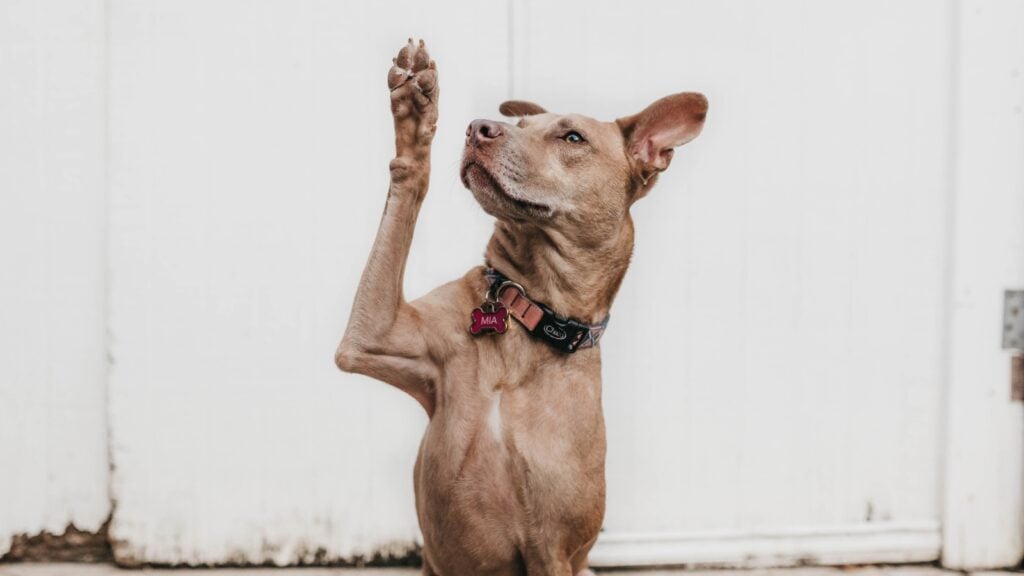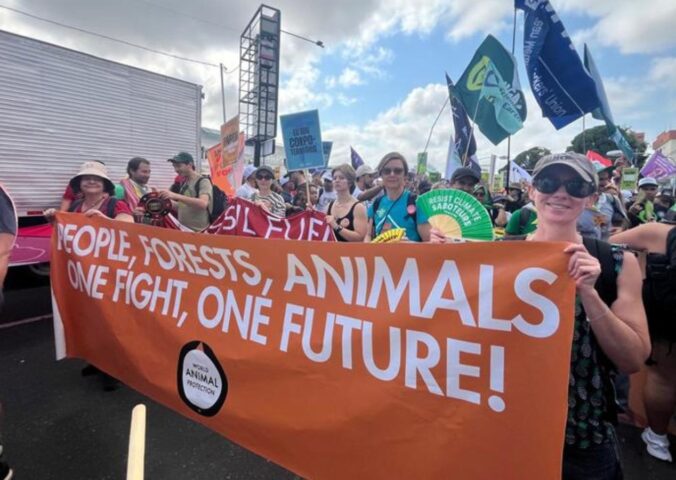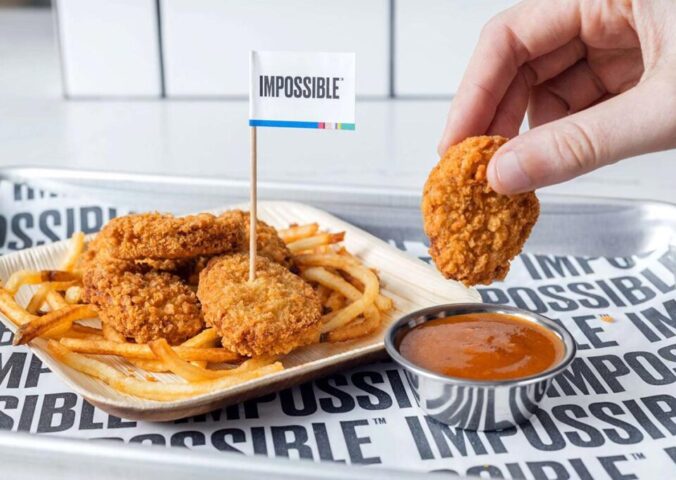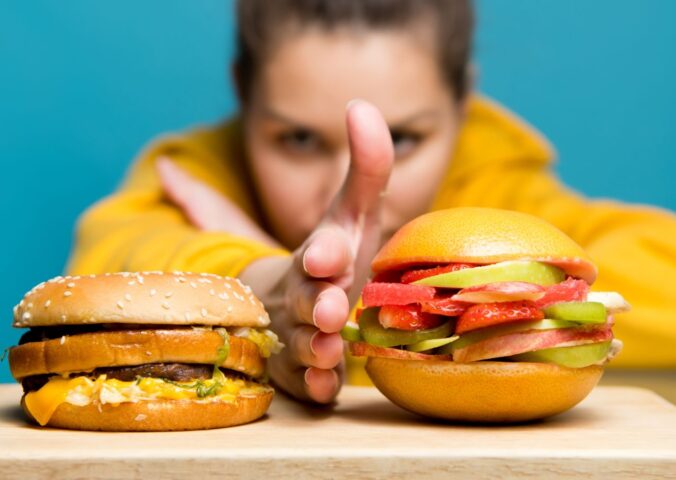🐕 This is a sponsored article * [what is this?]
Imagine all the 76 million pet dogs and 58 million pet cats in the United States of America, all eating meat around twice a day. If those pets had their own country, it would rank fifth in terms of global meat consumption. Now add the 12.5 million dogs and 12 million cats in the UK. Then the 54 million dogs and 58 million cats in China, and so on. That’s a lot of meat being gobbled down by hungry pets, and we all know that increasing meat consumption is giving our planet severe indigestion.
In 2017, research revealed that roughly a quarter of calories from all animal meat consumed in the United States are now eaten by pets. Given our love for furry companions in the UK too, and across Europe and increasingly Asia, the picture is likely to be similar. But don’t dogs and cats just eat “by-products,” the rubbish bits of meat that humans don’t want? Surely we’re just using up leftovers that would otherwise go to waste?
Not necessarily. Today, more and more of us want to feed our pets premium “human-grade” or raw meat diets. That means cows, pigs, chickens, and other animals are being bred and killed specifically for dog food: in the US, as many as 30 percent of intensively farmed animals. Yet most of us have largely ignored the increasing environmental impact of our pets’ high-protein “ancestral” raw meat diets. After all, how much difference can pet food really make?
Turns out, quite a lot.
The problem with meat-based pet food
Animal agriculture is thought to be responsible for at least 14.5 percent of global greenhouse gas emissions, meaning meaty dog foods are now a major player in the climate crisis. In 2020, research from the University of Edinburgh showed that the pet food industry produces almost three percent of the total carbon dioxide (CO2) emissions from farming. Maybe that doesn’t sound like much, but it’s the same amount of CO2 produced by a sixth of all global flights.
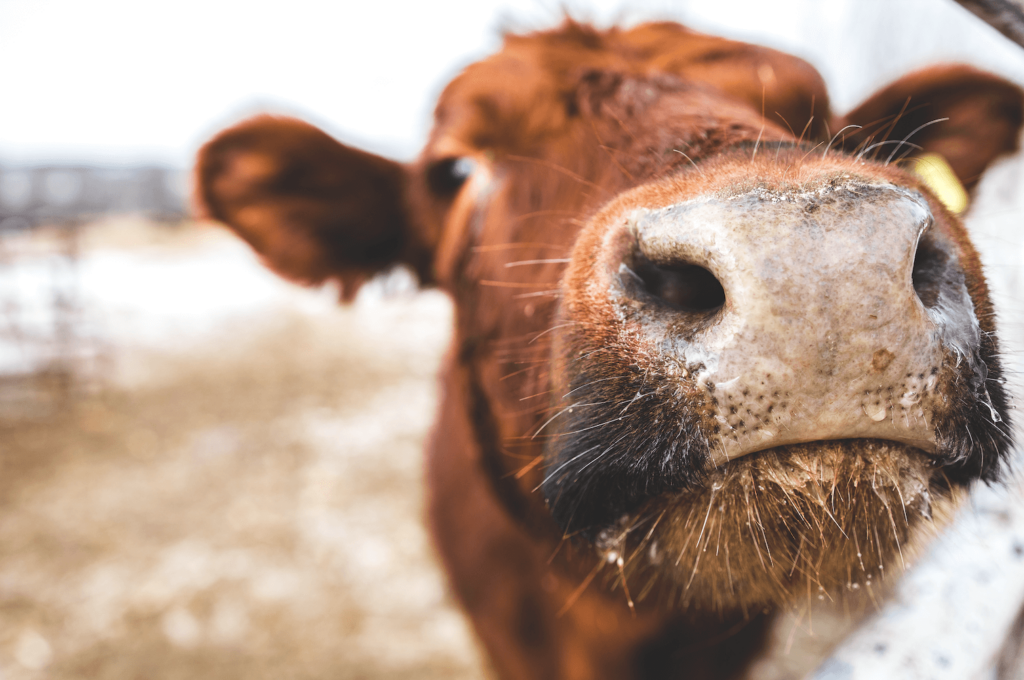
In fact, feeding dogs and cats in America alone has been calculated to be as environmentally damaging as pumping the exhaust of nearly 14 million cars into the atmosphere for one year.
And that’s just greenhouse gases. We also need to consider the environmental impacts from the additional land, water, fossil fuels, phosphates, and biocides needed to feed and farm the animals that go into our pet’s “gourmet, human-grade” meaty chunks.
That Edinburgh research tells us that making meat-based food for cats and dogs uses up a land mass twice the size of the UK, every year.
If we don’t significantly reduce the amount of meat we’re eating and feeding, researchers calculate that the livestock industry could account for up to 49 percent of total greenhouse gas emissions allowable under the 2°C and 1.5°C targets by 2030. Without dietary change, we’ll need to make substantial reductions in other areas such as manufacturing, housing, and transportation to meet climate goals, far beyond what is realistic.
An outdated food system
Aside from the environmental damage, we’re seeing increasing evidence that our existing food system is broken. Brexit has significantly impacted the profitability of our meat industry; duty-free access to the European market is lost, and new customs regulations have caused significant delays for meat imports, particularly lamb.
Bird flu is also spreading across the globe, meaning we’re about to see reductions in supplies of poultry. The meat and eggs that are available may lose their “high-welfare” or “free-range” labeling, since thousands of chickens are being locked inside for months to prevent the spread of infection (this issue is currently impacting every egg supplier in the UK).
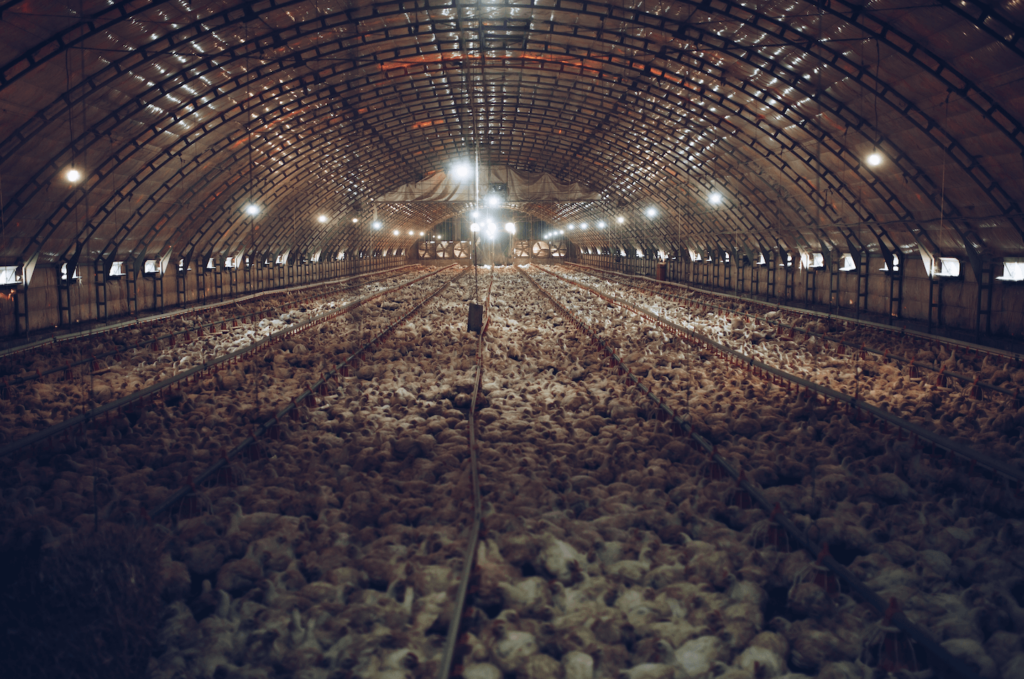
All this means that the empty shelves we saw in supermarkets during the global pandemic are likely a predictor of the future rather than a nightmare of the past. Today the meat industry faces additional economic pressures from the war against Ukraine and the rising cost of living. In a world of increasing food insecurity and rising energy prices, why rely on a fragile system based on animal exploitation when we don’t need to?
Are cheaper ‘by-product’ dog foods the answer?
But what if you’re buying pet food made from the by-products of the meat industry? What’s the harm in using up this “waste” meat? Quite aside from health and safety concerns of feeding our beloved dogs and cats animal parts that we wouldn’t wish to eat ourselves, using up by-products in this way helps keep intensive animal farming operations running.
According to the National Renderers Association, animal agriculture as we know it (i.e., factory farming) could not exist without the pet food industry. The amount of meat considered inedible by humans – such as bones, fat, blood, feathers, and internal organs – “is a large volume of by-product that would quickly overtake landfills if not rendered,” the organization says. “The sustainability of animal agriculture depends on a reasonable and practical use of the byproducts generated.”
Ultimately, pet food meat, leather, and other animal by-products are essential for the animal farming industry to remain profitable. According to the USDA Economic Research Service, beef, veal, and pork by-products account for up to 19 percent of the industry’s total value. Selling these by-products helps keep meat cheap and allows the animal farming industry to survive and thrive.
When we purchase food made up of “leftover” meat, we’re perpetuating a cruel, broken food system. Why would anybody who cares about animals want to do that?
Pet food as a public health threat
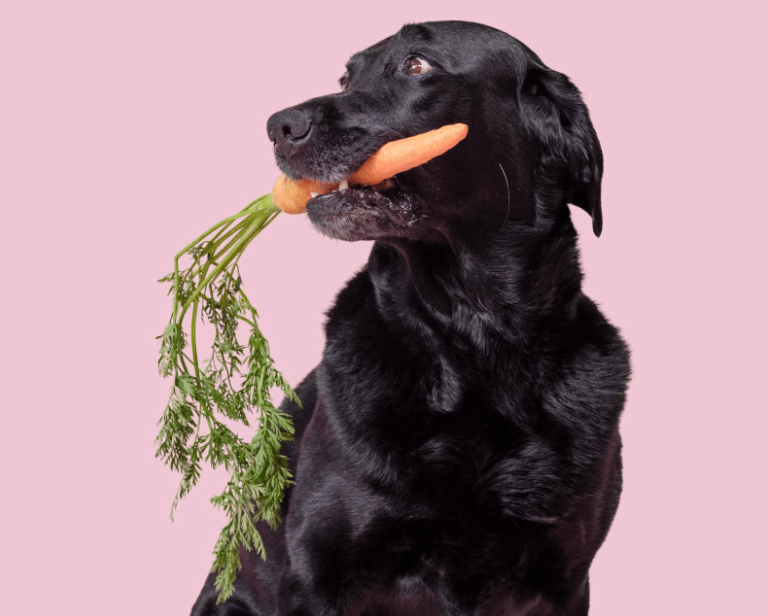
If by-products are bad, raw meat is worse. According to the British Small Animal Veterinary Association, American Veterinary Medical Association, and the World Small Animal Veterinary Association, raw meat pet food can introduce harmful bacteria like E. coli and salmonella, and even parasites, into our pets and into our homes. An FDA study has shown that raw meat-based pet food is more likely to be contaminated with disease-causing bacteria than other types of pet food.
This isn’t just bad news on a micro-level. A research paper last year warned that “the trend for feeding dogs raw food may be fueling the spread of antibiotic-resistant bacteria.” The raw foods analyzed in the study included beef, goose, duck, salmon, turkey, chicken, and lamb. More than half the foods tested positive for a type of bacteria called Enterococcus. Further, more than 40 percent of these enterococci were resistant to multiple types of antibiotics. And, most alarmingly, nearly a quarter were resistant to linezolid, a drug considered to be a “last-resort antibiotic.” That means it is used only when other drugs have failed to treat an infection – put simply, if that fails too, we’re f*cked. Antibiotic resistance is one of the biggest threats to humankind’s future on this planet.
So not only does raw meat have the potential to make our pets sick, studies show it could also seriously compromise our own immune systems, raising the risk of a broader public health crisis in humans.
Is fish-based pet food any better?
Many pet parents assume salmon or other seafood is a healthier and more sustainable choice for their animals. But what about the antibiotics and hormones used to grow farmed fish, and the way those toxic chemicals can seep into the ocean?
Then there’s the impact of using fish caught in the wild. Demand from pet food companies is starving wild marine animals of their dinner and disrupting ecosystems. The more seafood we feed to our dogs and cats, the closer we inch towards fishless oceans.
Earlier this year, a chilling study was published revealing that some brands of fish-based pet food in Singapore contained endangered shark species, listed vaguely as “ocean fish.” Roughly a third of the 144 pet food samples tested contained shark DNA, including the silky shark, sicklefin weasel shark, Caribbean sharpnose shark, sand tiger shark, and whitetip reef, all listed as vulnerable on the IUCN Red List.
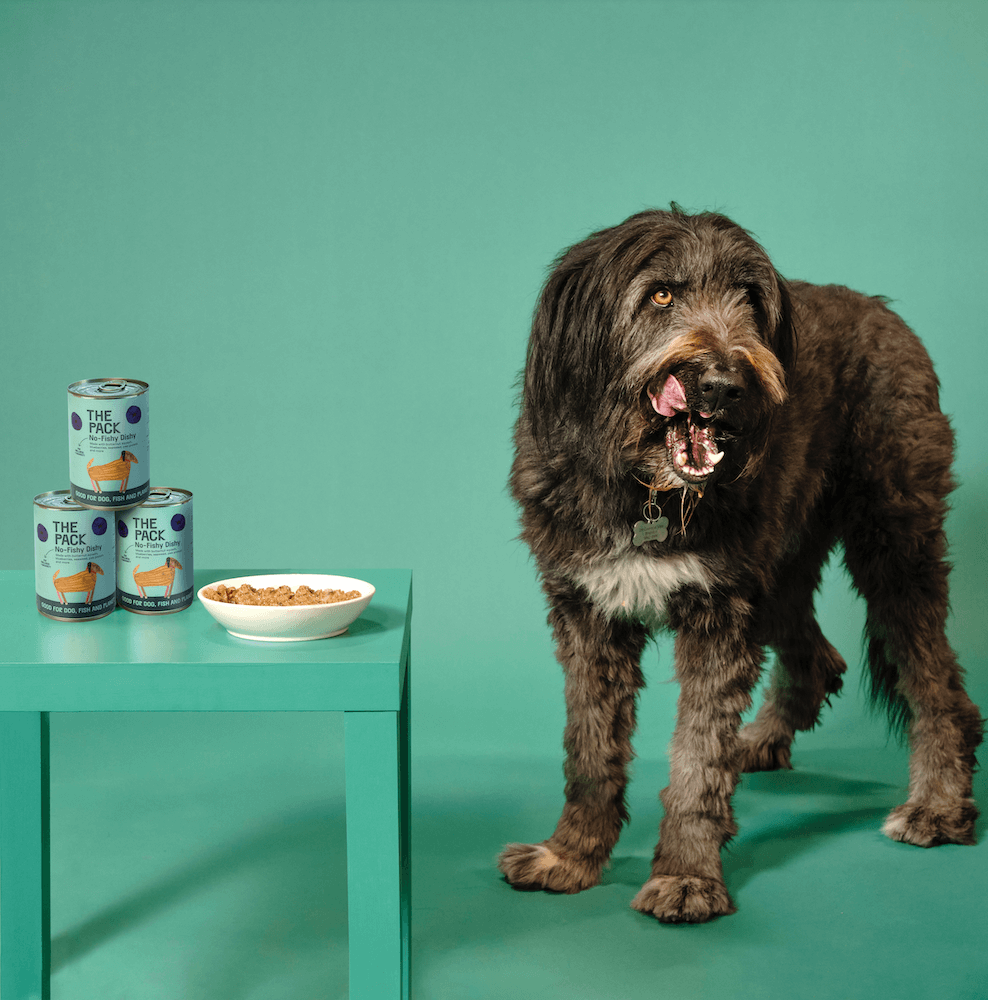
That these sharks ended up in pet food is disturbing on a number of levels: from a conservation point of view (shark populations have declined more than 70 percent in the past 50 years); because the meat is likely a byproduct of the cruel shark fin trade; and because it shows that when it comes to meat-based pet food, pet parents simply don’t know what they’re really buying.
Even though many of us are worried about the future of our planet and its wildlife, most of us are still feeding our pets meat, day in, day out. But it doesn’t have to be this way! At least not for dogs who, as omnivores, can thrive on a meat-free, plant-based diet.
That’s why new pet food companies like THE PACK are offering sustainable meals that protect the planet without compromising on taste. Created in consultation with scientists, animal nutritionists, and food-technologists, THE PACK’s No-Fishy Dishy complete wet food is loaded with umami flavors that simulate the taste of fish. Each can contains healthy, identifiable ingredients like pea protein, lupin beans, papaya, blueberries, and butternut squash – and no sharks lurk at the bottom!
How to enhance your dog’s diet
So where do you start? Simply adding more plant-based ingredients into your dog’s diet in place of meat is a fantastic first step. Many pet parents are already reducing the amount of meat and dairy they consume themselves, and there’s no reason why your dog can’t also be a “flexitarian”!

Swapping meat-based treats for veggie ones, for instance, can make a huge difference. Plant-sourced alternatives to meat require far fewer natural resources and produce significantly fewer greenhouse gas emissions. A third of all calories from the crops we grow are fed to farmed animals, with only 12 percent of those calories being “recycled” by humans when we eat meat, eggs, and dairy. That’s an enormous waste!
Put it this way: if we stop growing plants to feed farm animals and instead grow pulses, fruits, and vegetables for humans and pets, we could feed an extra 350 million people (and a whole lot of dogs too).
If we want to feed our dogs sustainable pet food, that food needs to be as low as possible on the food chain. Going straight to the calorie source – plants – improves health at the same time as reducing environmental damage. According to the calculations of animal nutritionists, if you are vegan yourself and you switch your 70-pound retriever to a plant-based diet, together you could save 2,200 gallons of water, about 60 square feet of rainforest, about 90 pounds of grain, and two farmed animals’ lives – every day.
Even if your dog is a flexitarian and their meat consumption is cut by half or even less, that’s still a lot of land, water, and animal lives spared. Many of THE PACK’s customers are pet parents who wish to feed plant-based food a few days a week, or as a substitute for one meat-based meal a day. Those people, and their dogs, are still making a big difference. To better quantify this, THE PACK conducted a lifecycle analysis (farm to pet) to work out the CO2 emissions generated by its plant-based food compared to meat-based equivalents. In terms of ingredients, the company discovered that a can of beef-based dog food is to blame for over 17 times more CO2 than its No-Moo Ragu!
As a result, the company says that every time someone purchases a can of plant-based dog food instead of beef, they save the equivalent of 3.28kg CO2. That’s the same as driving 16.4 kilometers in a new car, or using 32.8 liters of water.
Even for so-called “low-emission” meat-based pet food, like fish and chicken, the results were significant. The ingredients in THE PACK’s No-Fishy Dishy and No-Cluck Casserole created less than a sixth of the amount of CO2 than their animal-based counterparts.
Food dogs love
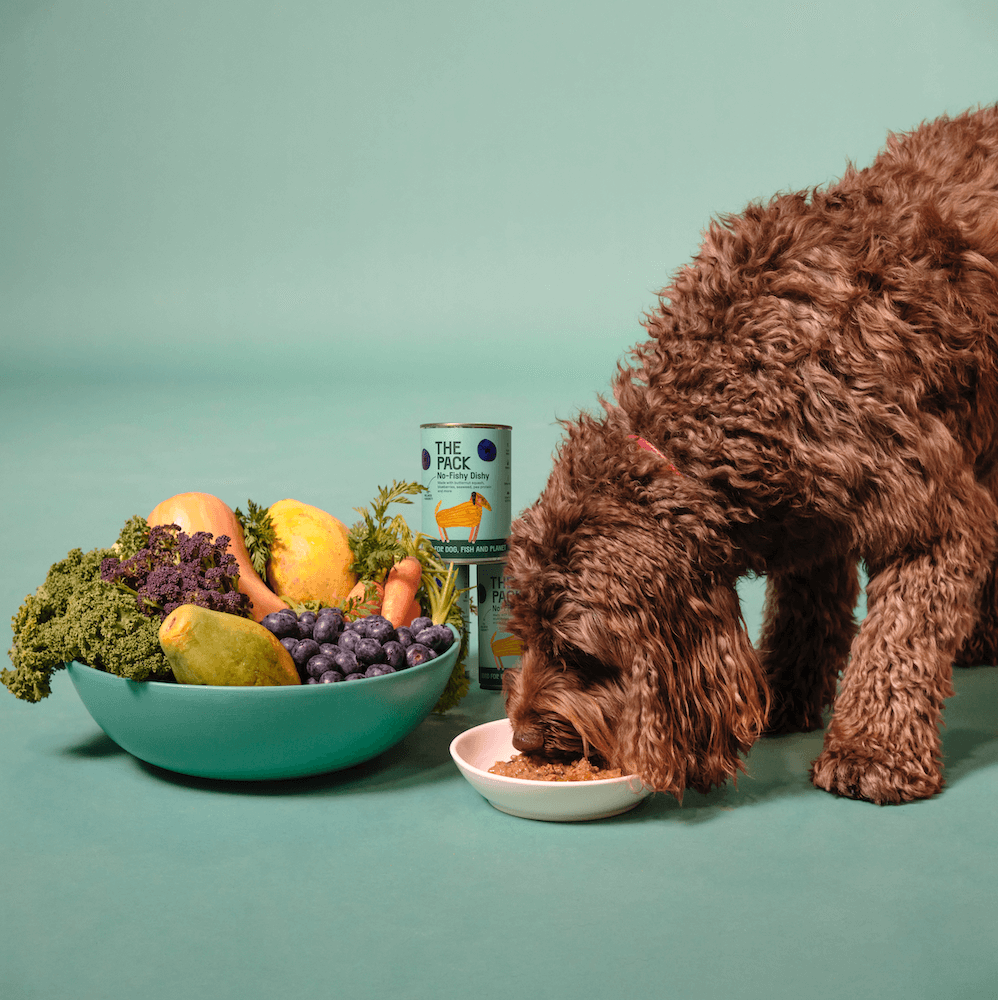
Damien Clarkson and Judy Nadel, co-founders of THE PACK, don’t want pet parents to feel like they have to pick between their dog and the planet. Who would? Their products make sure that dogs can enjoy their food just as much as before, all the while lowering their environmental pawprint.
“As pet parents ourselves we are obsessed with creating food our dogs love, nothing gives us greater pleasure than dogs chowing down and enjoying our food,” they said in a statement. “We are part of a new era of innovation in pet food meaning dog parents don’t have to compromise.”
“Now you can choose products like THE PACK and give your loved companion enjoyment from their food and in doing so you will be tackling the climate crisis through choosing planet friendly meals.”
***
Over the next 50 years, if we continue to do little to nothing to reverse the climate crisis, we’ll struggle to find enough resources to feed ourselves. We may face more pandemics as antibiotic resistance worsens, fed by trends like raw pet food. As the climate emergency progresses and pressure for natural resources escalates, how will we afford to keep our pets healthy?
Let’s not put ourselves in a position where we need to answer that question. Instead, by feeding our dogs plants instead of meat, we can help create a safe future for them, for us, and for the world.
Plant Based News has teamed up with THE PACK to offer 20 percent off its meaty, plant-based wet food for dogs. Simply use the code PBN20 when you check out at www.thepackpet.com
* This is paid-for content; funds from this article help Plant Based News continue to provide millions of people around the world with free content they know and love. We only work with brands we support and use ourselves.
